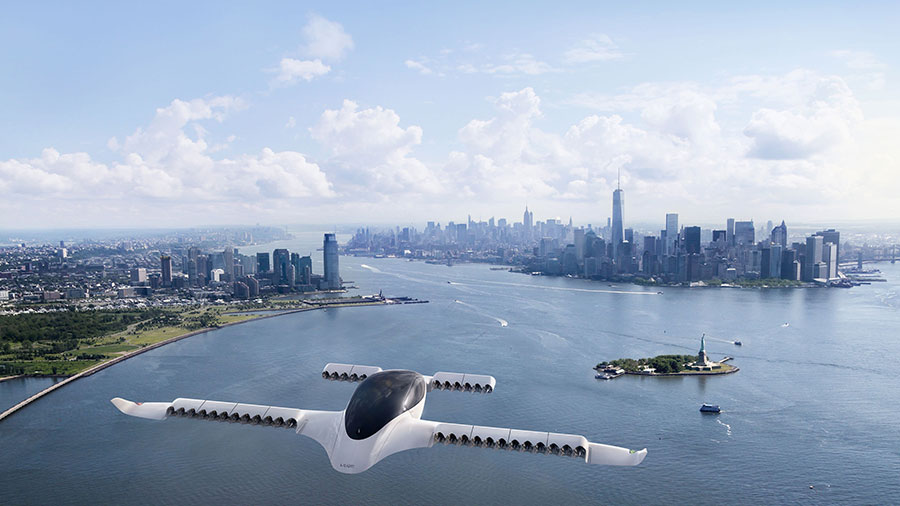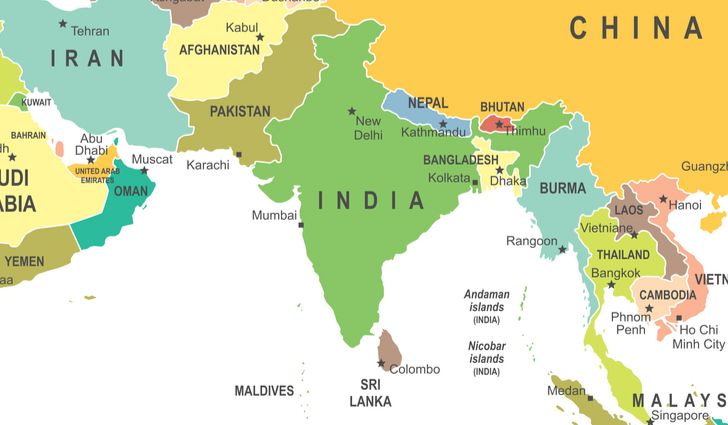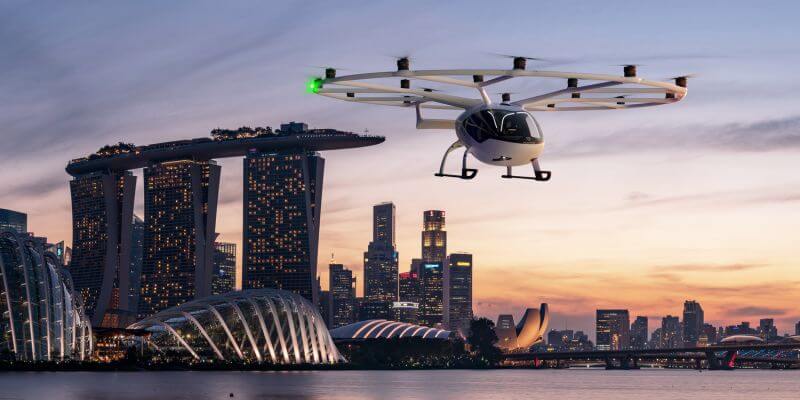China’s Outbound Investment Strategy Changes As The Belt And Road Initiative Becomes Futuristic
The Chinese invested Colombo Port City and Electric Air Mobility vehicles are showing the way ahead as the Belt and Road Initiative goes new hi-tech

The part China funded eVTOL Lilium Jet
The modus operandi for Chinese outbound investment has seen a maturing approach as the country expands its strategic development plans and focuses on the ‘dual circulation’ strategy, two major China policy components that are beginning to make a real impact on how China invests capital overseas. This represents a new stage in the development of the Belt and Road Initiative as basic infrastructure is completed and new technologies can start to be implemented to take advantage of the build.
Futuristic Cities
For example, the Colombo Port City in Sri Lanka is currently just a patch of ground – but it is all reclaimed land from the sea and has just received its quality certifications. With the land now solid, and the unseen drainage, energy and communications connectivity in place, the vertical build will shortly take place. These will be smart buildings and use Sri Lanka’s abundant sunshine as a power source, while EV charging and related self-driving infrastructure are all being put into place.

Colombo Port City today
A debt trap? Hardly – China’s Harbour Engineering (CHEC) has sunk US$1.4 billion from into the reclamation of 269 hectares. But real estate development, including commercial, financial, hospitality, residential and social infrastructure, is now being accelerated. That money is not a loan, and is intended to give both CHEC and the Sri Lanka government (who have not invested in the project but own a minority stake) dividends. These come in several different ways:
Real Estate Development
The Colombo Port City complex has several different component parts, and includes commercial land in the form of port facilities, a special economic zone, connections to the nearby international airport and commercial office buildings.
Plots of land and designated building sites are already being sold off or leased, with that income being split between CHEC and the Sri Lankan government. Foreign investors including contractors and developers are now bidding for these and will be building many of the required buildings to then further lease and/or sell on. Sri Lankan taxes, stamp duties and utilities will all be charging for services to support these buildings.
Business Development
The idea is to turn CPC into a financial services hub along the lines of Singapore, both attracting back-office operations from Singapore itself as well as establishing CPC as a financial services centre for South Asia (Afghanistan, Bangladesh, Bhutan, India, Iran, Maldives, Myanmar, Nepal, Pakistan & Thailand). An MoU with the Colombo Stock Exchange has been agreed and legislation passed to allow CPC to operate as a financial services centre.
IPOs
Certain assets at CPC and elsewhere will also be packaged up and listed on the main Colombo Stock Exchange – meaning that parts of China’s Belt & Road Initiative infrastructure will eventually end up in the hands of private investors. The idea is not new, it has been developed by Singapore’s Temasek holdings, who have been advising the Sri Lankan government on structuring this. Our earlier report on that can be accessed here.
Other businesses will of course also be attracted to support this main, South Asian financial services initiative. All will be required to pay taxes and related monies to the Sri Lankan government. An independent report by PwC report estimated that the project would create more than 200,000 jobs and would contribute around US$11.8 billion to Sri Lanka’s annual GDP. Where’s the debt trap?

Futuristic Travel
Getting around futuristic cities such as the Colombo Port City will be radically different from now. China has been a major investor in EV technologies, including in EV battery production and Electric Air Mobility. Interestingly, these Chinese investments have been made with foreign partners with China taking minority stakes.
The new issue of Asia Investment Research, which is jointly produced each month by China Investment Research and Dezan Shira & Associates, provides six unique case studies into this. In the section on Electric Air Mobility (think Flying Taxis) they discuss two major developments in this, with prototypes from Lilium and Volocopter being invested in by Chinese development partners.
The eVTOL Lilium Jet pictured at the start is possible in part to TenCent investing a 14% share of a US$240 million round in 2020. Involvement by Chinese businesses in new tech businesses helps both with spreading the development costs and risks, and also allows future access to China’s massive middle-class consumer market – still growing and estimated to reach 1.2 billion by 2025.
The full story of China’s investment involvement in the Lilium Jet is within the upcoming issue of Asia Investment Research, due next week, and which deals with Chinese outbound investment into new tech, with case studies in biotech, EV and Electric Air Mobility. Complimentary copies may be requested in advance here.

Lilium aren’t the only futuristic Air Mobility business. Volocopter are originally a German company, but now have significant Chinese investment – and when ultimately listed, will see returns on that investment capital many times over. Again, the full story is in the upcoming issue of Asia Investment Research, but the entire business is estimated to be worth into the billions. China will be building some of these for the domestic market in Chengdu in conjunction with Geely, while the company has also partnered with the ride-hailing firm Grab to conduct a joint feasibility study on the prospect of offering airborne rides in Southeast Asia. Test flights have already been undertaken in Singapore.
This new wave of technical outbound investment is a new feature of the Belt and Road Initiative and the types of projects that Chinese investors are now looking at. With the heavy lifting of many infrastructure projects – such as the Colombo Port City – now completed, the next stage will increasing be investments into Belt and Road Tech.
The upcoming issue of Asia Investment Research provides six case studies into this, as well as information about positioning businesses to attract Chinese minority investments – useful for access to development capital and access later to the Chinese consumer market. All roads continue to lead to Beijing. Politicians and businesses in denial about this will find themselves on the wrong side of history.
Related Reading
About Us
Chris Devonshire-Ellis is the Chairman of Dezan Shira & Associates. The firm assists British and Foreign Investment into Asia and has 28 offices throughout China, India, the ASEAN nations and Russia. For strategic and business intelligence concerning China’s Belt & Road Initiative please email silkroad@dezshira.com or visit us at www.dezshira.com





